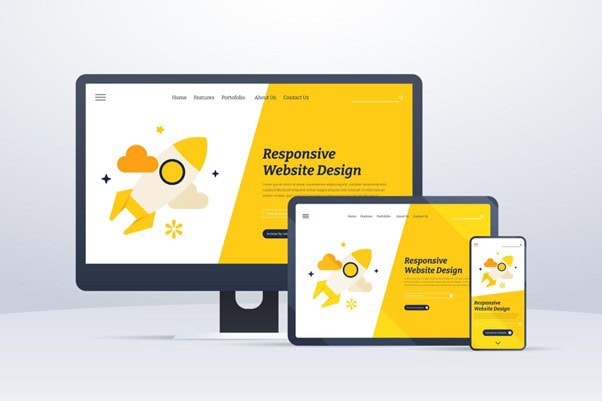User experience and SEO are closely intertwined. Neglecting user experience optimization may lead to a drop in Google rankings. Conversely, without implementing SEO, efforts to ensure great UX may go in vain. To make your website successful, you must prioritize both user experience and SEO.
In this article, we will explore the relationship between user experience and SEO, how they influence each other, and strategies for optimizing user experience to enhance your SEO performance.
Understanding User Experience
When it comes to user experience (UX) on a website, it means offering a smooth and enjoyable experience to the user. It is crucial for creating a successful website that captivates the user and entices them to spend more time on the site.
UX encompasses everything from design and layout to navigation ease and content clarity. User experience optimization strives to improve the overall experience for site visitors by implementing various changes to the website.
How user experience optimization helps SEO

User experience optimization is a vital step you can take to boost your SEO outcomes. In fact, Google considers user experience an important ranking factor.
Here’s the official statement from Google on the matter:
“Google’s core ranking systems look to reward content that provides a good page experience.”
This implies that if your website provides content that ensures a positive user experience, Google will acknowledge this by positioning your web pages higher in search results.
If you’re interested in understanding the relationship between user experience and SEO, as well as how enhancing UX can positively impact SEO, here are several points to consider:
Improved Site Architecture
Optimizing user experience refines your website’s structure. It involves creating straightforward menus and categories, logically organizing content, and using breadcrumbs for improved context.
This not only aids users in navigating your site and finding the information they need but also helps search engines grasp your site’s content hierarchy. As a result, this can give your SEO performance a significant boost.
Enhanced Page Speed
It’s no secret that users detest websites that take an eternity to load. Indeed, a staggering 47% of visitors will bid farewell to a website if it doesn’t load within two seconds. Enhancing user experience involves identifying and rectifying these performance bottlenecks, thereby boosting your site’s speed.
Moreover, page speed is a critical factor in Google’s ranking algorithm – optimizing it can significantly improve your visibility on Google searches.
Boosts User Engagement
User engagement metrics, such as bounce rate, time on site, and click-through rate, can influence your search engine rankings. Optimizing user experience can help you identify areas of your site that may be causing users to leave quickly or struggle to find what they’re looking for.
When users can quickly and easily find what they need, they are more likely to stay on the website and explore further. A lower bounce rate signals to search engines that the website is relevant and valuable to users.
How to Leverage User Experience Optimization for Better SEO
Optimizing the User Experience is an essential component in boosting SEO performance. By prioritizing the improvement of your website’s overall user experience, you can effectively influence your search engine rankings and attract more organic traffic. However, if you are a beginner, you can seek assistance from an affordable SEO services provider to improve UX.
Let’s delve into some strategies to harness User Experience Optimization for superior SEO results:
Conduct User Research
Every business caters to a unique set of customers, each with their own specific preferences, requirements, and challenges. In order to tailor your website’s design, content, and structure to meet these needs effectively, comprehensive audience research is crucial.
This can be conducted through various methods such as surveys, analytics data analysis, interviews, or user testing sessions. It’s also beneficial to include a feedback feature on your website for additional insights. Prior to initiating user research for user experience optimization, consider the following questions:
- Who is your target audience?
- What’s the average age of this group?
- Where are they located geographically?
- What are their needs, objectives, and challenges?
These questions can help you understand your audience better and ensure they have a great experience.
Work on improving site speed and performance

As we touched on before, the speed of your website is a critical factor in user experience and SEO. Websites that load quickly tend to have lower bounce rates and more engaged users, which can give your SEO rankings a significant boost.
Here are some strategies you can put into action to speed up your website:
- Compress and resize images to reduce their file size without significantly impacting image quality.
- Use image formats that are suitable for the content, such as JPEG for photographs and PNG for graphics with transparency.
- Implement lazy loading to defer the loading of images until they are visible on the screen.
- Remove unnecessary characters, comments, and whitespace from CSS and JavaScript files to reduce their file size.
- Set proper HTTP caching headers to allow browsers to cache static resources like images, CSS, and JavaScript files.
- Combine multiple CSS and JavaScript files into a single file to minimize the number of HTTP requests.
- Enable GZIP compression on your web server to reduce the file sizes of text-based resources (HTML, CSS, JavaScript) during transmission.
- Consider upgrading to a faster hosting provider or utilizing a content delivery network (CDN) to reduce server response time.
- Use tools like Google Page Speed Insights to identify areas for improvement.
Implement Responsive web design

Nowadays, most people access the internet from their mobile devices. Considering the majority of global web traffic comes from mobile devices, it is essential to implement responsive web design to improve both user experience and SEO.
Here are some straightforward suggestions to enhance user experience for responsive web design:
- Start the design process by focusing on the mobile experience first.
- Design the layout, content, and functionality to fit smaller screens and touch interactions.
- Use a fluid grid system that adjusts and scales the layout proportionally based on the screen size.
- Implement responsive images that automatically adapt to different screen sizes and resolutions.
- Use CSS techniques, such as max-width: 100%, to ensure images and media scale proportionally.
- Utilize CSS media queries to apply different styles and layout rules based on the screen size and device capabilities.
- Ensure that buttons and links have sufficient spacing to prevent accidental taps and make them easy to interact with using fingers.
- Use tools like Google’s Mobile-Friendly Test to check your website’s mobile performance.
Let’s make your website a joy to explore for users and easy for search engine crawlers to understand your website structure.
To ensure concise navigation follow these optimization tips for user experience:
- Implement a clear and intuitive navigation structure with well-defined menus and categories.
- Keep the main menu items to a minimum.
- Use crisp and concise menu labels that speak directly to the user.
- Neatly arrange any extra pages/subtopics using submenus/dropdown menus.
- Use breadcrumbs to guide users through the website hierarchy.
- Ensure internal linking practices are optimized.
- Incorporate a search bar for efficient information retrieval.
Improve Content Quality and Relevance
Gone are those days when anyone can stuff keywords in irrelevant content and get ranked on search results. Google now penalizes sites that practice these manipulative practices and rewards those websites that provide content while considering user experience in mind. High-quality, relevant content is essential for both user experience and SEO.
To improve your content quality and relevance to optimize user experience and SEO, follow these tips:
- Make sure you know your target audience well and tailor your content accordingly.
- Offer valuable and informative content that goes beyond surface-level details.
- Ensure content is well-written, engaging, original, and unique.
- Use keywords naturally and strategically, and avoid keyword stuffing.
- Provide content that answers your audience’s questions and addresses their needs.
- Keep content up-to-date and aligned with current trends and the interests of your target audience.
- Use content formats like videos, infographics, and podcasts to enhance user engagement.
- Use clear and concise language that is easy to read and understand.
- Ensure proper formatting and use of readable font sizes.
- Use diverse formats such as articles, videos, infographics, or podcasts
- Use headings, subheadings, and bullet points to break up text and make it scannable.
Design an Engaging and Well-Designed User Interface
If you want to keep your website visitors engaged and encourage them to spend more time on your site, it’s crucial to create a user interface that simplifies their experience.
To optimize the user experience and ensure a friendly and engaging interface, here are some tips you should consider:
- Utilize visually pleasing colors, fonts, and graphics that align with your brand.
- Ensure that the website layout is clean, organized, and easy to navigate.
- Use high-quality images and graphics to enhance the visual experience.
- Pay attention to spacing and alignment to create a balanced and harmonious design.
Optimize CTA Buttons & Encourage Engagement
Effective CTAs can guide users toward desired actions, such as signing up for a newsletter or making a purchase. Adding interactive buttons to your website can significantly improve the user experience.
Here are some practical tips you might want to consider for your site:
- Use compelling and action-oriented language on your CTA buttons.
- Ensure your CTA buttons are visually distinct and strategically placed.
- Foster user interaction through comment sections, forums, or social media integration.
- Include social sharing buttons to encourage users to share your content on social media.
- Provide personalized recommendations or suggestions based on user preferences or browsing history.
- Allow users to customize their experience by saving preferences or creating personalized profiles.
- Showcase user-generated content, such as user reviews, testimonials, or social media posts
- Implement gamification elements, such as badges, rewards, or progress tracking
Test, analyze, and iterate
When it comes to optimizing user experience, you can’t guarantee the success of your implementations unless you continuously test performance, analyze user interactions, and gather feedback.
Here are a few tips to follow after you have implemented the previous recommendations:
- Use tools like heat maps and user session recordings to understand how users interact with your site.
- Analyze user behavior data to identify areas where users are struggling, such as confusing navigation, slow loading times, or irrelevant content.
- Track key metrics like bounce rate, dwell time, and conversion rates to measure the effectiveness of your user optimization efforts.
- Regularly iterate and optimize your website based on user insights and SEO best practices.
- Utilize analytics tools like Google Analytics to gain insights into user behavior on your website.
- Incorporate interactive features such as quizzes, polls, and surveys to engage users and gather feedback.
- Provide avenues for users to provide feedback, such as ratings, reviews, or feedback forms.
- Use A/B testing to experiment with different design elements, CTAs, and content to see what works best for your audience.
In Conclusion
In the quest for search optimization, it’s easy to lose sight of user experience (UX). But remember, a successful website strikes a balance between UX and SEO. Don’t rush – take your time to implement the tips mentioned in the article and continuously improve your site.



